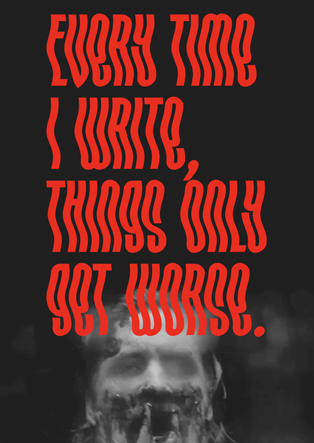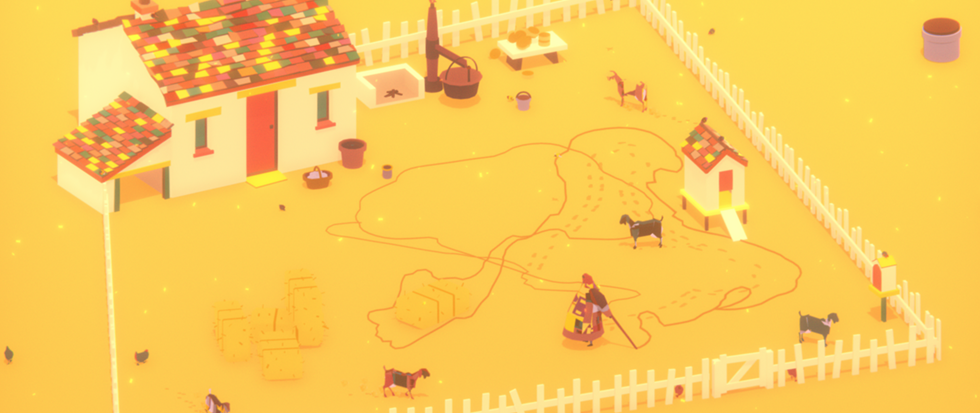
Tables for Days
One morning, early on in our Philosophy 101 class, our diminutive and unassuming former Mr. Wyoming professor stepped into the room and simply asked “Who here believes in free will?” There was some undergrad bandying about, maybe even an proto-conspiracy theorist positing that our existence is a mere supercomputer simulation, before we settled on a general consensus that free will does indeed exist. To which the former Mr. Wyoming said “so I can just leave this room if I want?” We said yes, and he left. And didn’t come back.
After a few minutes of chittering disbelief, most of the class followed behind. I lasted until about five minutes before the official end of class then hustled out, only to learn later that the former Mr. Wyoming popped in at the very end to award extra credit to any sheepish souls who stuck around for the entire class. We got into it at the next class, breaking down our various responses and crude insights as to what it meant for our professor to “abandon” his wards to prove a point. If nothing else, it was a direct philosophical confrontation, a dismissal of textual missives to establish content in a kind of interactive philosophy.
This memory flitted through my mind as I clicked about Ryan Kuo’s Tables of Content, an interactive art piece recently published online for Art Journal. Ryan’s a compelling digital artist and irregular Netrunner adversary who I met when he was an early editor at Kill Screen (RIP). He’s created artworks in sound, video, Twine, and has now become an arguable master craftsman of the HTML table. His statement on his piece outlines the overarching goals of this work, his working through the modes of content dissemination and presentation throughout the internet, which he very succinctly metaphorizes with his poetic description: “further processing, akin to the movement of a cow’s stomach…” The internet is the cow’s stomach, all us users the swirling sea of bacteria and acids breaking down and reconstituting the itinerant parts of language and media swarming about according to our own perspectives.
Ryan’s description is apt and elegant. Clicking through his interlinked tables is the experience. Tables of Content expands and adjusts and leads the viewer through a series of italicized links digesting content, context, and conclusion of a sort. The way the artist talks about white space and names his tables, forcing them to work as enjambment, demands that we reckon with each as poetry. Even taking in his notes on utilizing white space evokes verse: “White space ensures that one’s attention is comfortably and correctly directed toward the content given the highest importance, generating the desire to read and desire for a brand.” Poetry is conducted around white space, forcing a tension against free will with the line as a map of the fourth dimension (and repeatedly broken and reassembled to those ends). Which is exactly what Ryan accomplishes with his interlinked but standalone tabular works.
Each click crawls and breaks, feeding the user language slowly stripped from context. We are ostensibly equipped to directly engage with but are also forced to reform on the text on our end. Such is reading, but the tables reactivate our flow, the speed of our eyes as they skate across the screen. We are given options on where to click, thus directing our own experience, though this is also something of a false experience and desire: we want to be shown the way but also want to believe we discovered it for ourselves. Understanding this text is already an act of self-discovery, but Ryan is still drawing the map, breaking language and tables to do so.
The thrills of Twine and interactive fiction propels Tables of Content, a promise of collaborative narrative of a sort, an instant avenue into headcanon. Though I am not as familiar with such works as I would like to be, there are many game/digital artists who use the possibility of making reading more time-sensitive and physically interactive, so as to reconfigure the reading for a user. Specifically I’m thinking of Salt, a recent piece by Gareth Damian Martin, which subtly emulates a kind of extreme multitasking. The player is tasked to read/think while “swimming,” to explore the limitations of a bifurcated attention span. Ryan is approaching a similar space, interactive philosophy through the power of cells, using HTML rather than Twine to break up the regular flow of text into something that has to be wrangled with in a new fashion.
Ryan’s conducting of the reader’s attention, controlling the aperture of their free will, comprises one of my favorite series of tables: “15. Multiplication Table of Discontent.” This table winds through seemingly sterilized notions and well-arranged thought boxes, ideas transforming via clicks and multiplication of the boxes into a cancerous overgrowth of misunderstanding and discontent. Each series of tables is a spiraling sprawl of supposedly tidy ideas that can’t help but become overwrought, content force-fed through a never-ending series of breakdowns and buildups.
These are the digital art pieces that get closest to the power of verse, obliterating the riverbeds of language and technology to redirect the stream from artist towards reader into enticingly unnatural modes. Ryan’s tables refract ideas and content into a forced cache refresh, a simulacrum of choice as a way for the human brain to view the world almost anew.




